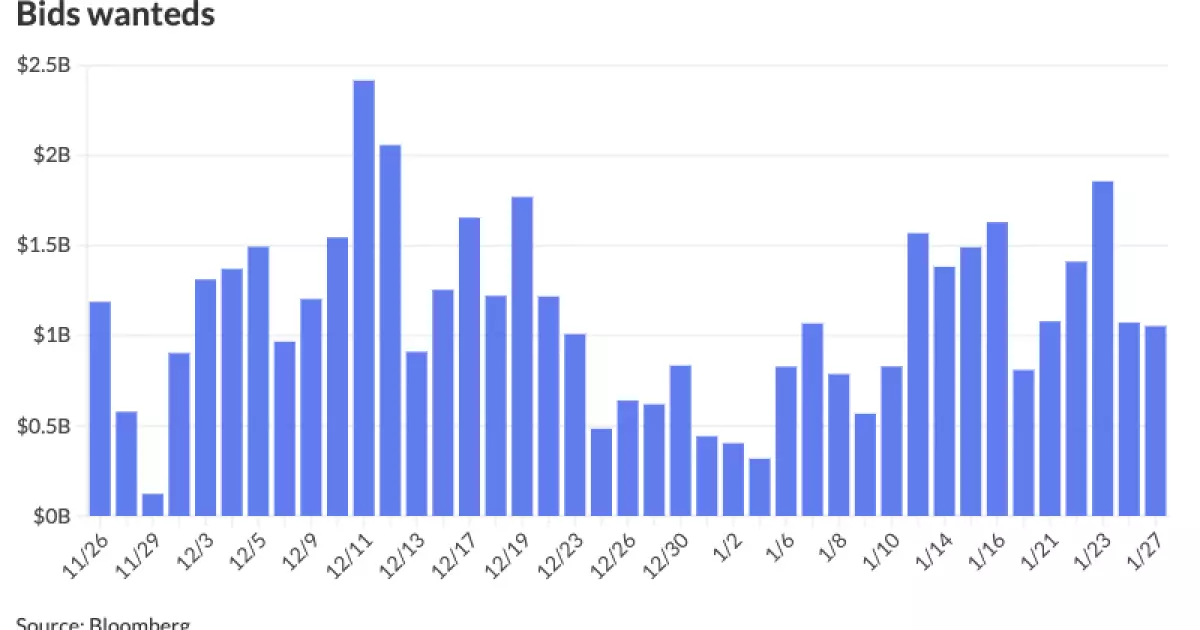The municipal bond landscape has displayed relative steadiness in recent trading sessions, especially in the context of an important Federal Open Market Committee (FOMC) meeting looming on the horizon. Investors and analysts alike are closely monitoring developments, particularly given the external macroeconomic pressures exerted by the federal government’s shifting policies under President Donald Trump. Insights from prominent financial strategists suggest that despite potential turbulence in the near term, there could be an underlying stability that impacts municipal bonds in 2023.
The anticipation surrounding the forthcoming Federal Reserve meeting has resulted in muted movements within the U.S. Treasury yield sector, fostering a stable environment for municipal bond trading. According to experts from BlackRock, significant policy changes, especially those emphasizing deregulation, could spur economic growth rapidly. This, however, comes alongside concerns about inflation, particularly due to potential tariffs. While tariffs could impose slight economic drags, BlackRock posits that such measures may function more effectively as negotiation tools rather than concrete policies.
The anticipated FOMC discussions may lead to a tempered outlook on interest rates. As highlighted by Municipal Market Analytics partner Matt Fabian, the likelihood of a rapid rate cut appears low due to robust data reflecting inflation and economic growth. Therefore, the Fed may gradually decelerate rate cuts throughout the year—perhaps concluding this cycle by mid-2023. The stability in rates is vital for municipal bonds, as it influences investment strategies, municipal services funding, and overall market confidence.
Despite the uncertain background influenced by federal policies, the municipal bond market has exhibited resilient demand from retail investors. A surge in active trading has been supported by attractive yields, stable credit quality, and an extensive range of low-cost retail investing platforms available today. The market recently exceeded $70 billion in par trades even with diminished trading days, signifying that investor appetite remains robust despite broader economic uncertainties.
Yet, not all indicators are overwhelmingly positive. Financial strategists note that a significant volume of mutual funds witnessed outflows totaling $166 billion in 2022 and 2023, which have yet to see meaningful recapture. The cautious stance of many investors is tied to awaiting optimal market conditions before reentering the municipal bond space. Should the Fed take further actions to lower rates, it may entice additional capital influx into municipal bonds.
Tax policy evolutions present a critical variable with the potential to redefine demand dynamics. Should changes be enacted that impact the state and local tax (SALT) deduction, it might lessen the need for tax sheltering in high-tax states. This could lead to a decrease in specific state demand for municipal bonds, thereby influencing overall market effectiveness. On the corporate landscape, reducing the corporate tax rate could drive institutional interest downward, further complicating the demand equation for municipal investments.
Moreover, a return to the alternative minimum tax (AMT) provision thresholds from pre-Tax Cuts and Jobs Act levels also threatens to restrict interest in AMT bonds. BlackRock’s analysis suggests that while demand remains strong due to current conditions, these potential policy shifts could significantly dampen municipal bond utilization moving forward.
On the pricing front, municipal bond deals continue to reflect a measure of careful selection and targeted investing. Repricing movements among several noteworthy bond issues underline the presence of active investors looking for promising opportunities within the market spectrum. The issuance of Oklahoma Turnpike Authority bonds at varied maturities and yields highlights the continued investor engagement in strategic municipal financing.
Moreover, the education sector, as demonstrated by bonds priced for the California Regents and Michigan Public Schools, is pivotal in maintaining investor confidence. These bond structures offer potential in higher yielding scenarios, which are appealing amidst an overarching cautious economic climate. The calls for multifaceted issuances and a blend of various tranches indicate a flexible market willing to adapt to consumer and investor needs.
As the municipal bond market navigates these tumultuous waters, the outlook remains cautiously optimistic. The interplay between fiscal policy adjustments, potential tax changes, and sustained investor demand could lead to an era of both stability and evolution in how municipal bonds are perceived and utilized. With key markets poised to respond dynamically to U.S. Treasury movements and broader economic signals, the coming months will prove crucial in determining the trajectory of this important financial landscape. Investors need to stay informed, ready to recalibrate their strategies in alignment with the prevailing economic climate and regulatory environment changes that may unfold in 2023.

